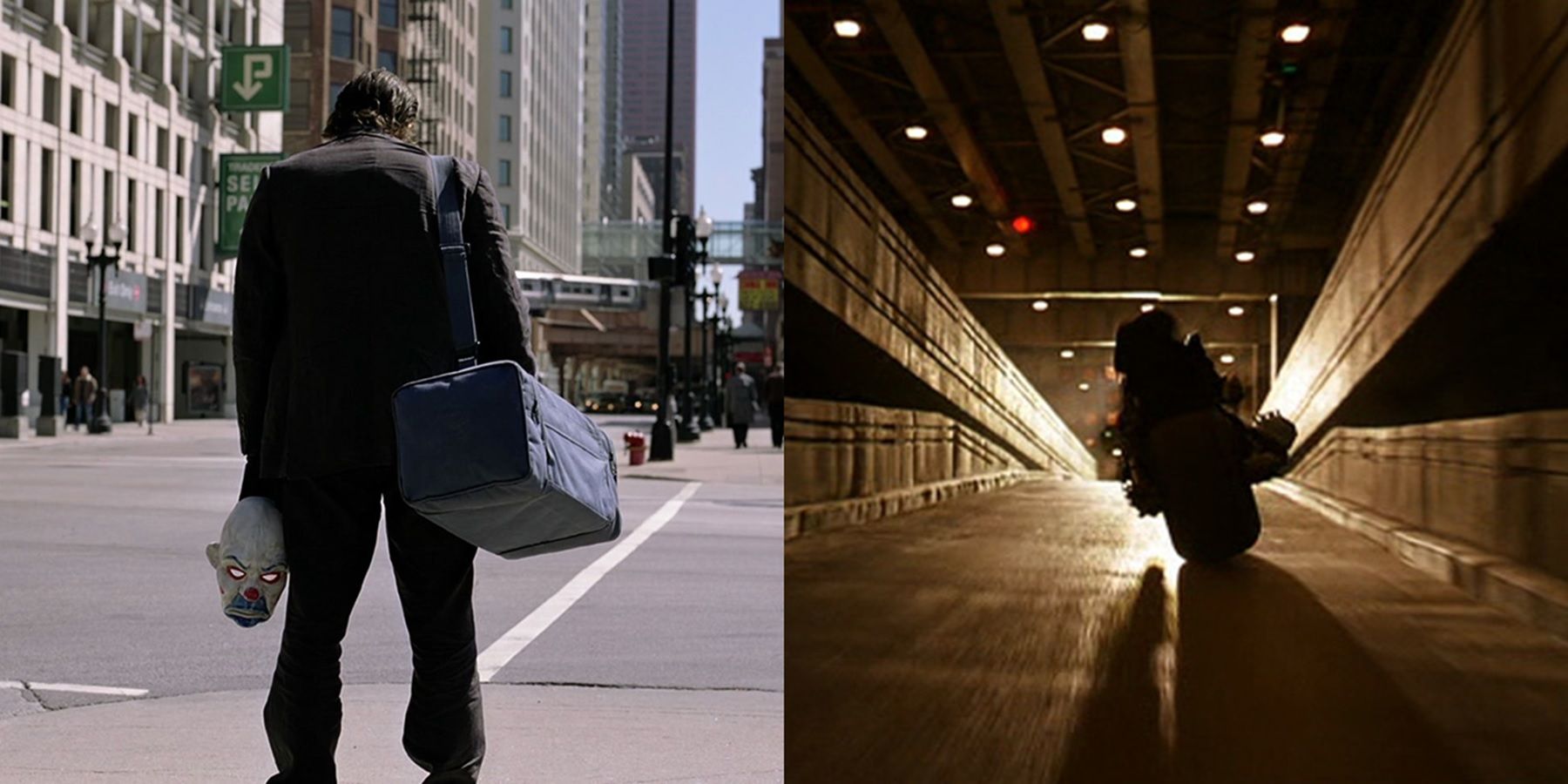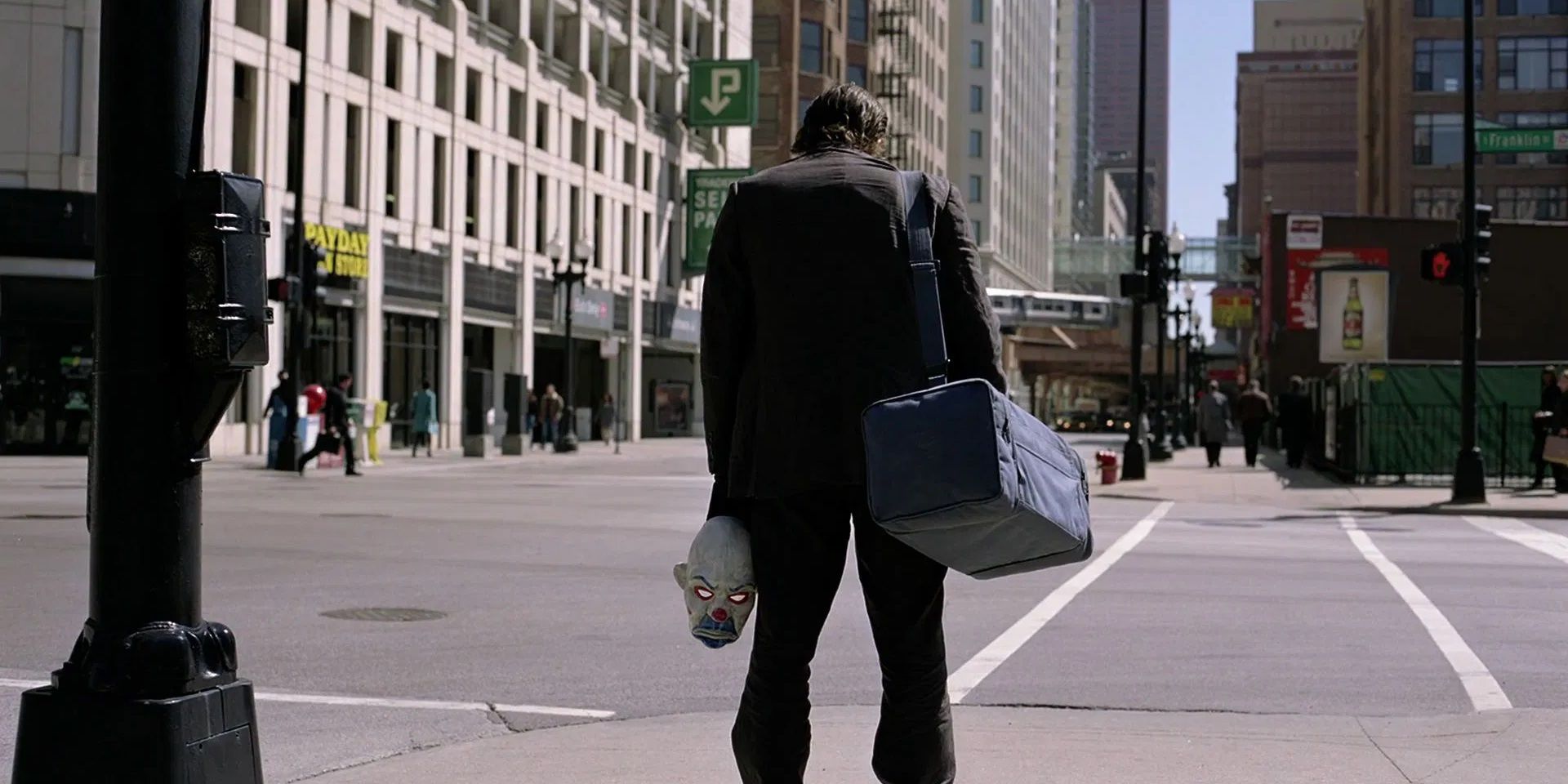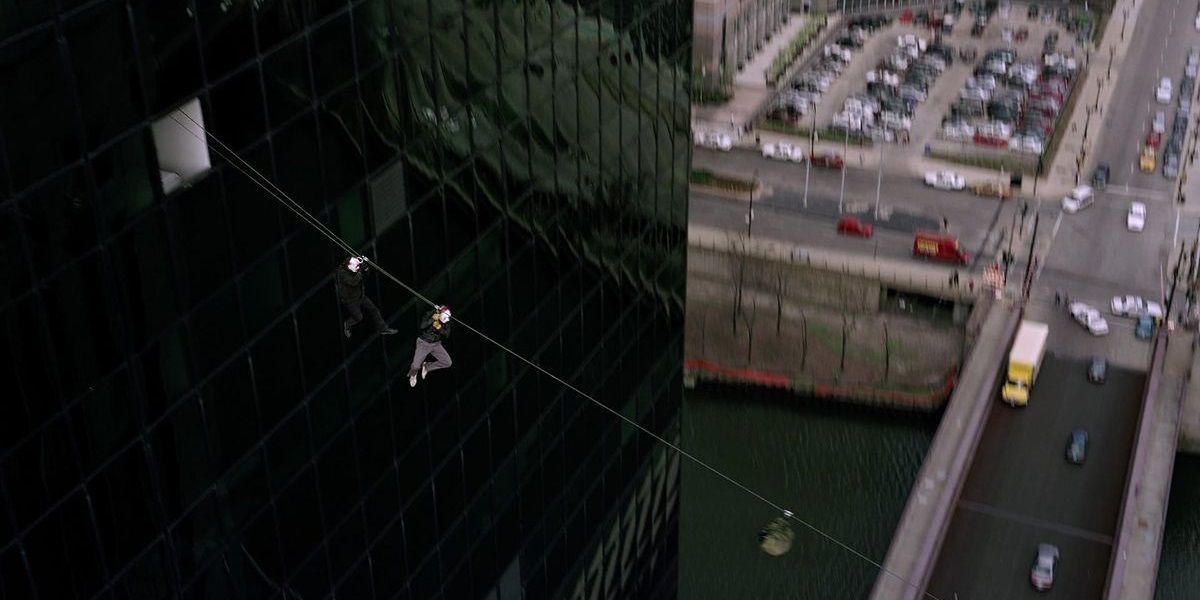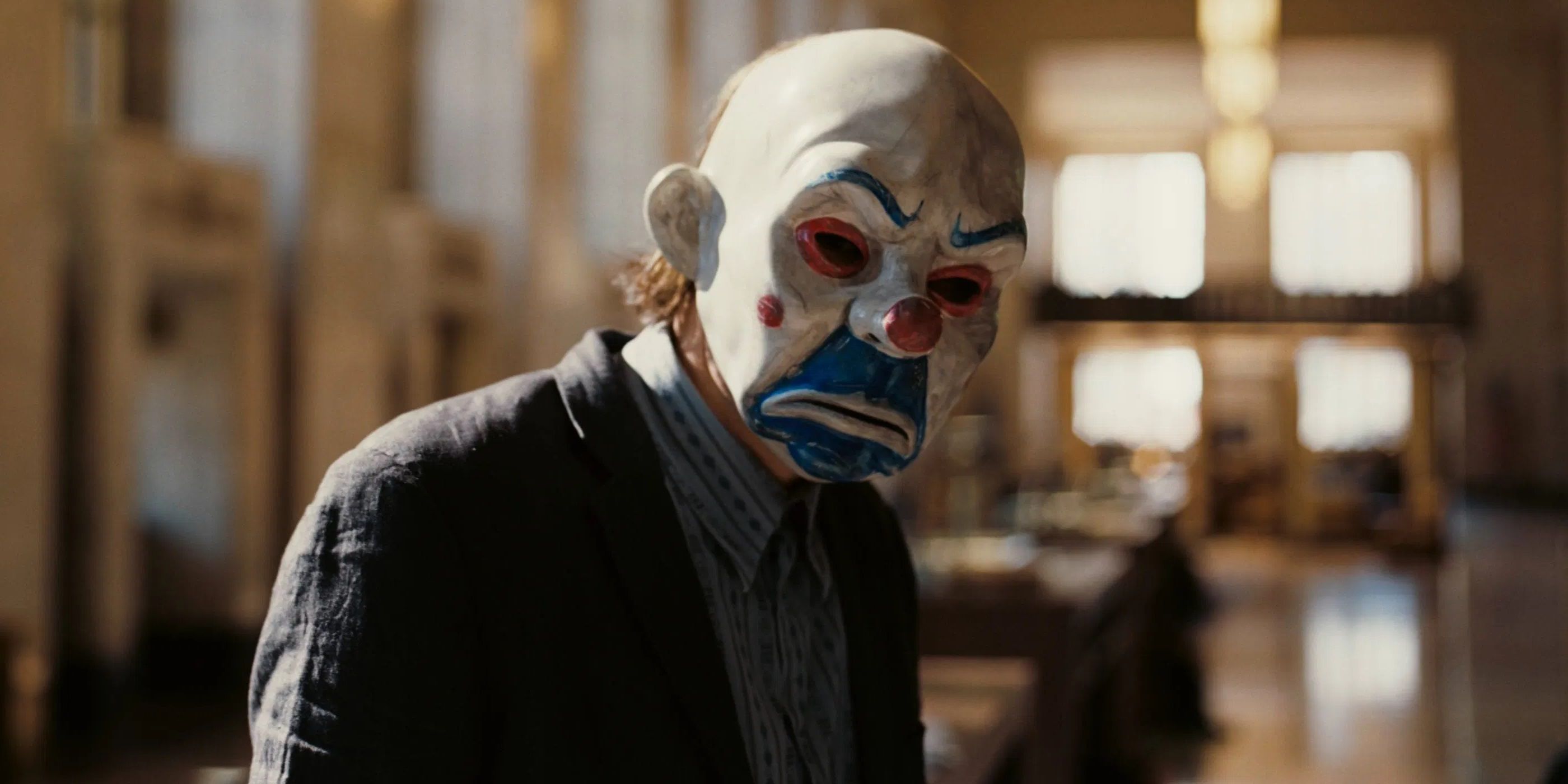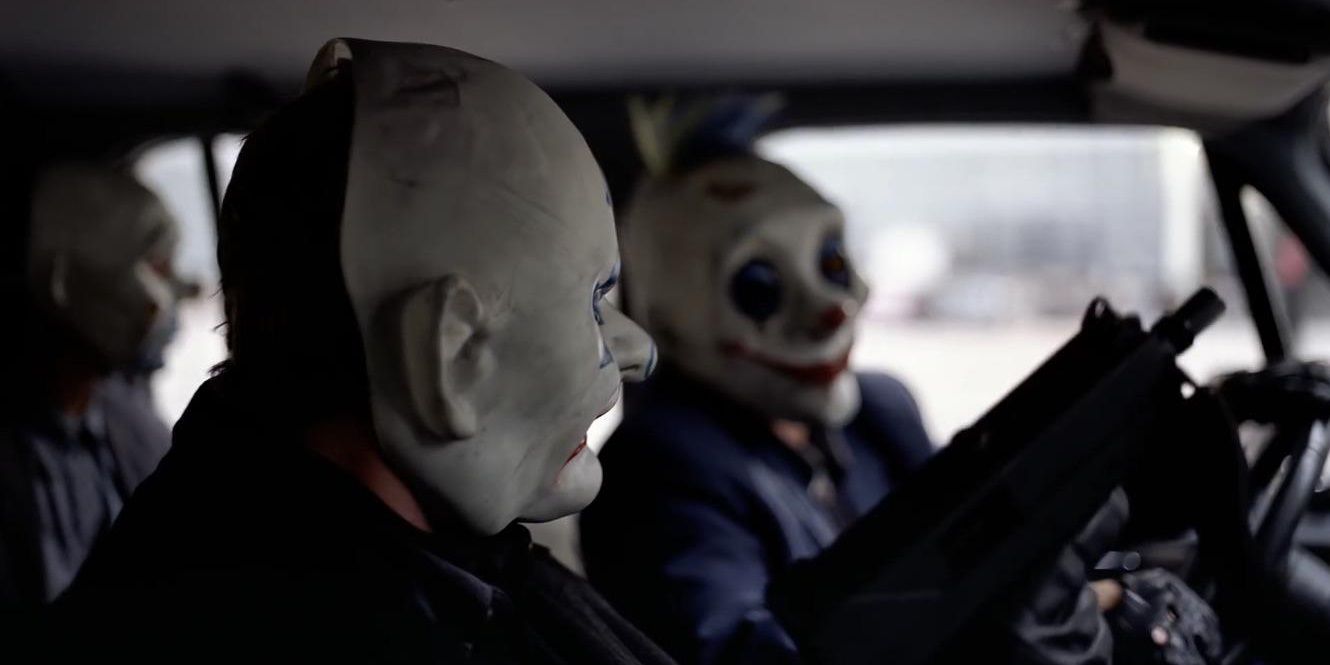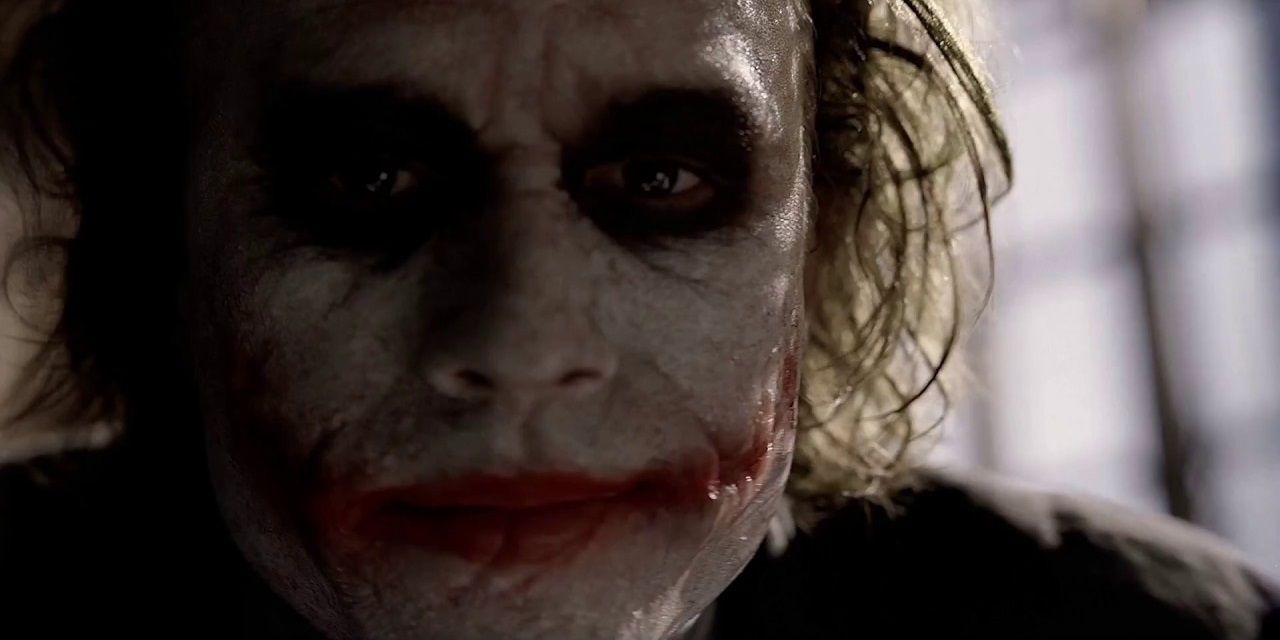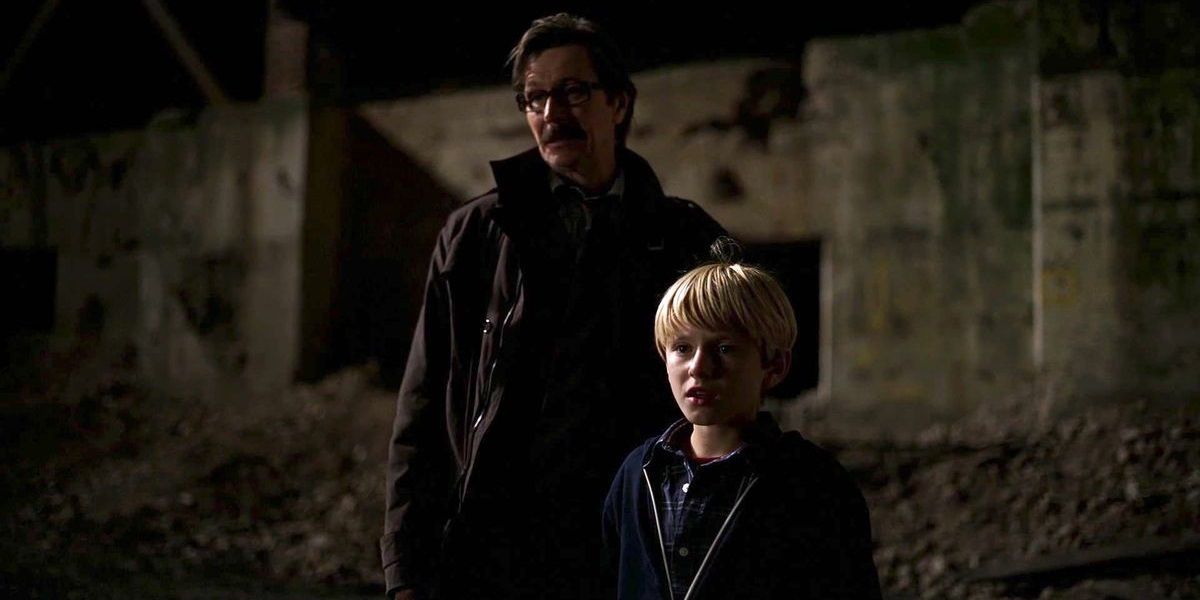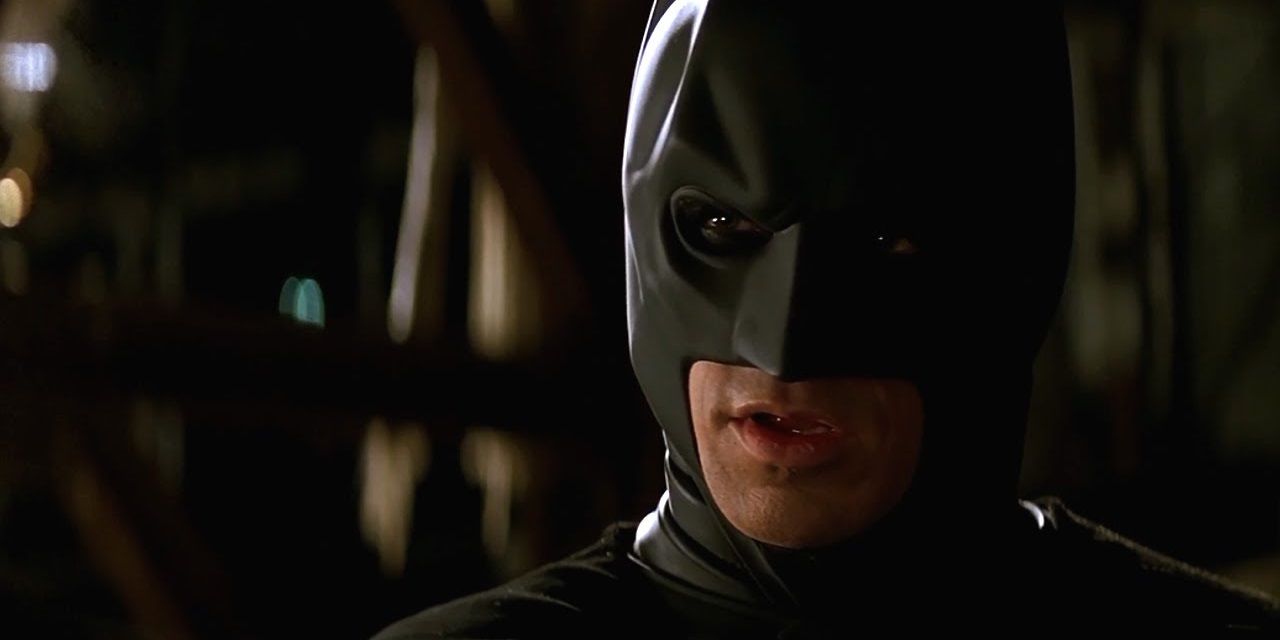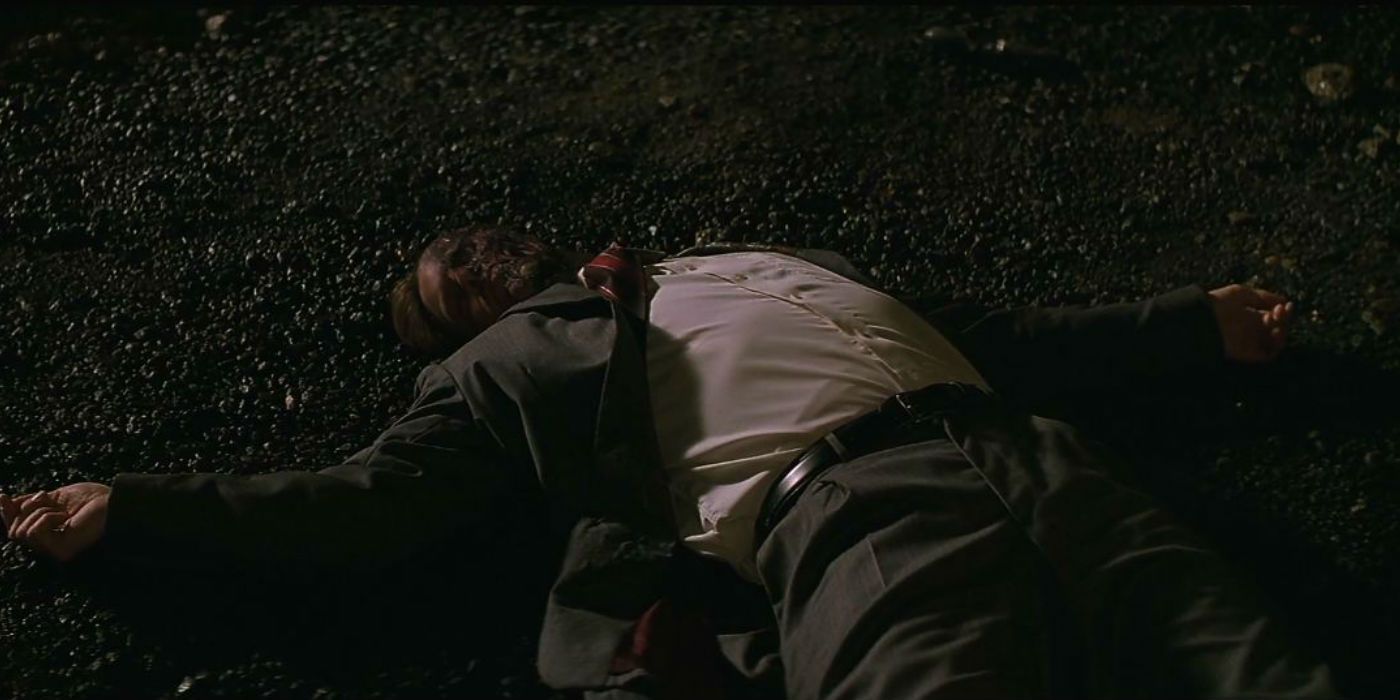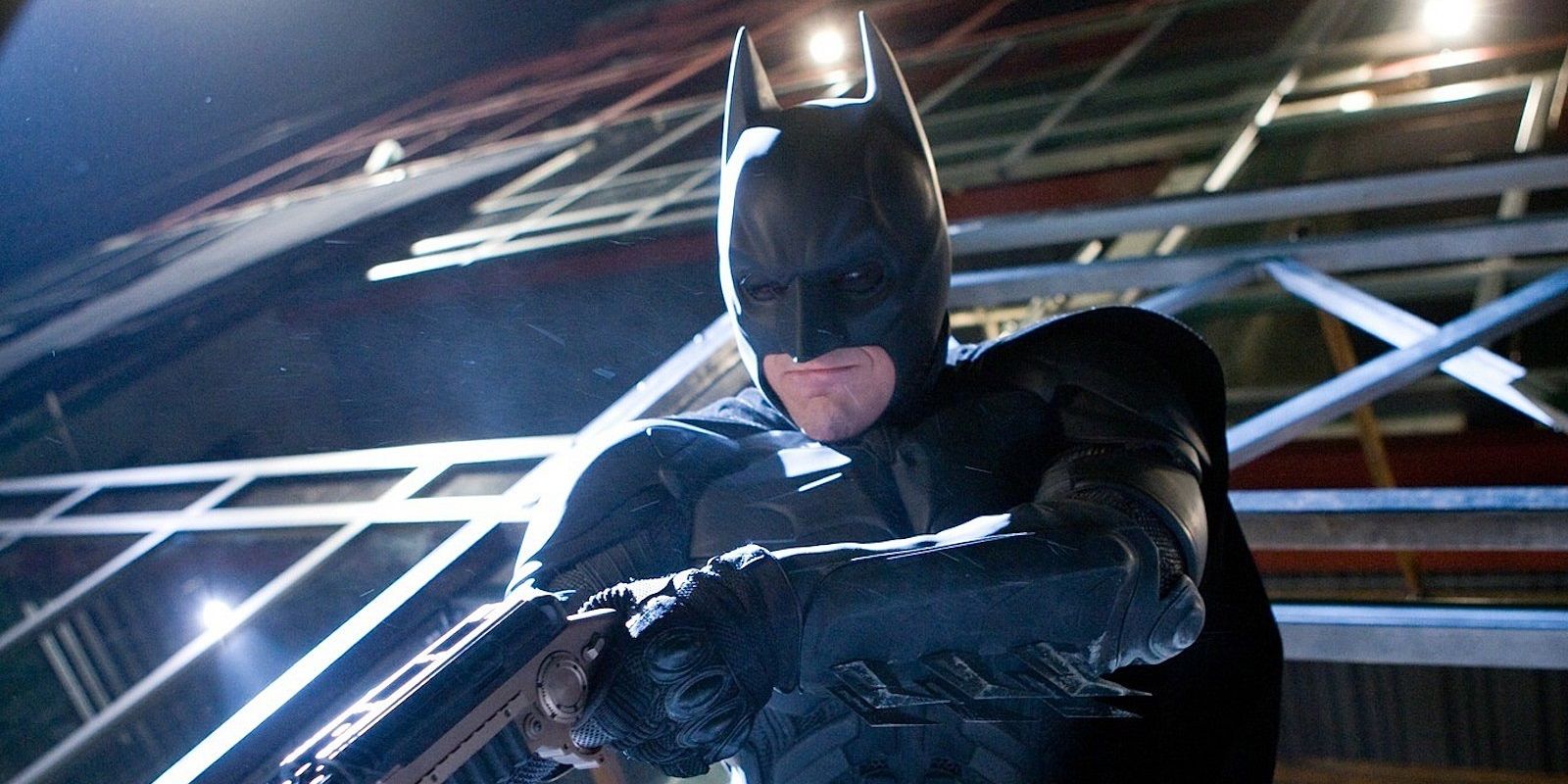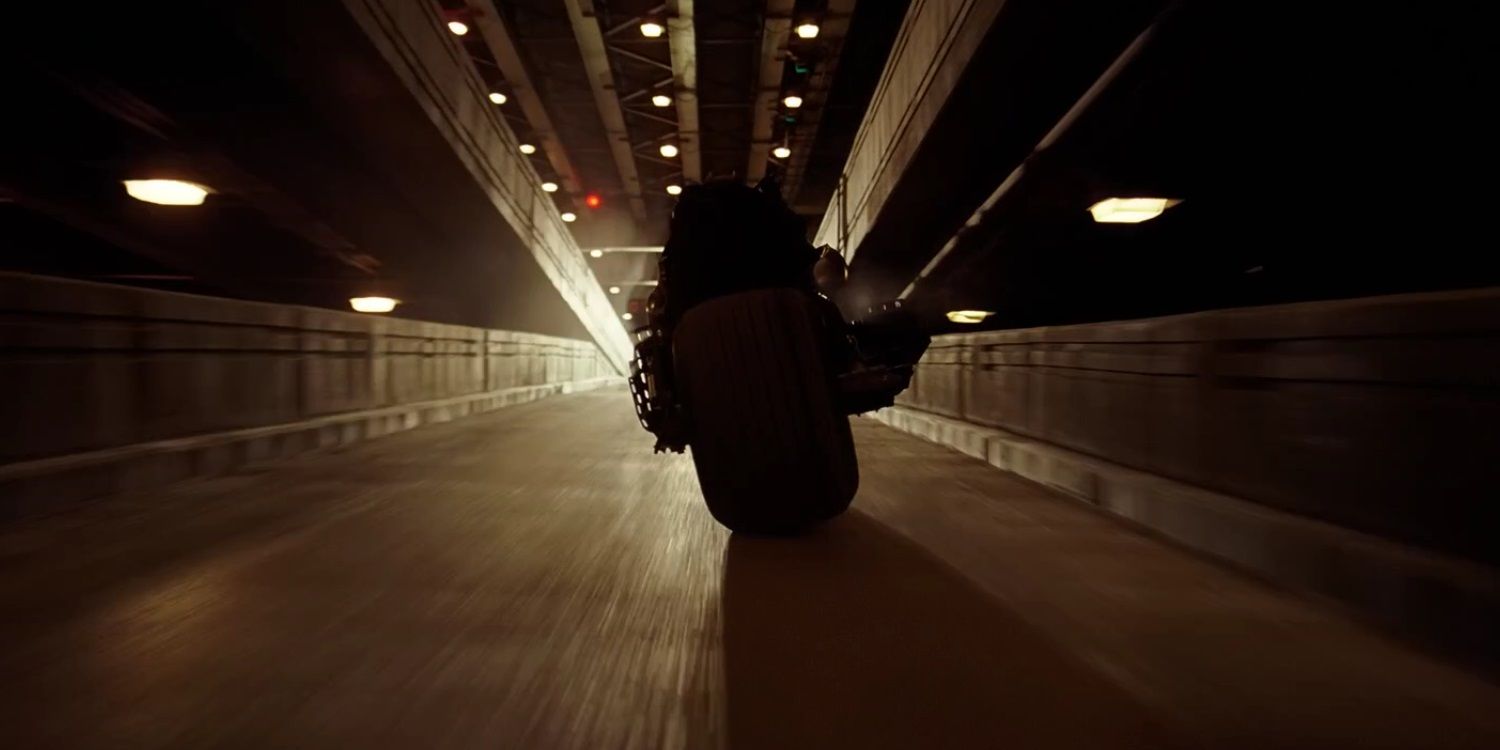One of the go-to examples of a perfect superhero movie is Christopher Nolan’s The Dark Knight. The script perfectly encapsulates the Batman mythos, the IMAX action sequences are mind-blowing, and Heath Ledger’s Oscar-winning portrayal of the Joker is one of the most memorable villains in movie history. Every great movie needs the perfect opening and closing scenes, and The Dark Knight has just that.
The opening bank heist beautifully establishes the Clown Prince of Crime and his place in a crime-ridden Gotham City, while Batman’s final sacrifice wraps up the story’s conflicts in a neat bow and sets the stage for the big finale in The Dark Knight Rises.
Opening: It Dives Right Into The Action
From the offset, The Dark Knight takes advantage of the greatest benefit of a superhero sequel. Whereas the first movie has the burden of explaining its character’s origin story before getting to the exciting stuff, the second movie can dive right into the action.
After exploring the Bat’s origin story in more depth than ever before (in movie form, at least) in Batman Begins, Christopher Nolan wasted no time immersing the audience in a crime-ridden Gotham in The Dark Knight’s opening set piece.
Opening: The IMAX Cinematography Is Breathtaking
The bank heist is one of several sequences in The Dark Knight that Nolan and his team filmed using IMAX cameras. The resulting images are breathtaking, even on a small screen.
From the unnerving opening shot of the Joker standing on a street corner with a clown mask in his hand to the dizzying aerial shots of skyscrapers, the IMAX cameras really brought this set piece to life.
Opening: It Perfectly Establishes The Joker’s Reign Of Terror
Throughout the bank heist sequence, it becomes apparent that the Joker has hired all these bank robbers and told them secretly to kill each other so that he can make off with the whole loot.
This scene perfectly establishes the Joker’s reign of terror, which is draped over the rest of the movie, hanging over Bruce Wayne’s conscience.
Opening: It Works On Its Own As A Short Crime Film
If the opening scene of The Dark Knight wasn’t from a larger movie and was simply released as its own as a five-minute standalone short, then it would still be a masterpiece.
Without any ties to Batman, this bank heist would make an awesome crime short full of twists and turns. It even has its own beginning, middle, and end.
Opening: It Has Nothing To Do With Batman
Although The Dark Knight is a Batman movie (and, in many ways, the ultimate Batman movie), its opening scene doesn’t involve Batman at all. The Joker and his goons successfully rob a bank and the titular crimefighter never arrives to stop them. The opening scene serves only to introduce the movie’s iconic villain.
It’s not easy to steal the spotlight from Batman in a Batman movie — or in any movie, as evidenced by The Lego Movie — but Heath Ledger’s Joker managed it. So, it’s appropriate that the movie’s opening focuses on the Joker and has nothing to do with the Caped Crusader.
Ending: The Stakes Of The Final Standoff Are Intimate And Relatable
Two-Face isn’t threatening to destroy a city or wipe out half of all life in the universe; he’s only threatening to kill one person in retaliation for Rachel’s death.
But since that person is Commissioner Gordon’s son and the whole family is being terrorized, the tension has a lot more relatability and emotional impact than unfathomably large-scale conflicts like Ultron plotting to exterminate the entire human race.
Ending: Hans Zimmer’s Mesmerizing Score Emphasizes The Weight Of Batman’s Sacrifice
Although Danny Elfman gave Batman such a perfect theme in Michael Keaton’s movies that it was reused in the critically acclaimed animated series, the greatest Batman movie scores were written by Hans Zimmer for Nolan’s trilogy.
Zimmer’s wall-of-sound musical style created the perfect tense atmosphere for Nolan’s trio of postmodern noirs. His breathtaking orchestrations in the final scene really sell the weight of the Bat’s symbolic sacrifice.
Ending: Nolan Uses The Secondary Villain Effectively
Ever since Batman was terrorized by both the Penguin and Catwoman simultaneously in Batman Returns, the Bat’s on-screen adventures have included two major antagonists. But including a secondary villain is a dangerous game to play, because it often results in two villains that aren’t developed enough squabbling for screen time. In The Dark Knight, Nolan used the secondary villain effectively.
Two-Face is a pawn in the Joker’s master scheme. Corrupting Harvey Dent was a step in the Joker’s plan. When both ferries refuse to blow each other up, the Joker is proven wrong. But Harvey’s fall from grace in the final scene, threatening Commissioner Gordon’s family, also kind of proves Joker right.
Ending: It Left An Intriguing Setup For The Dark Knight Rises
Going into the final chapter of the trilogy, Batman was public enemy number one in Gotham, since the crimes of Harvey Dent had been pinned on him in the closing moments of The Dark Knight.
Nolan’s third Batman movie, The Dark Knight Rises, was one of the most highly anticipated tentpole releases in 2012, partly because the previous movie had ended on such a tantalizing cliffhanger (and partly because, more broadly, the previous movie was a masterpiece).
Ending: Batman Makes A Sacrifice Only He Can Make
Iron Man’s sacrifice in Avengers: Endgame is an emotionally charged moment that perfectly concludes Tony Stark’s ongoing multi-movie MCU character arc, but the specifics of that sacrifice aren’t inextricably tied to the Iron Man character. Captain America could’ve easily put on the Gauntlet and done the snap himself. The final sacrifice in The Dark Knight, on the other hand, is a sacrifice that only Batman can make.
It’s not a physical sacrifice. Rather, Batman sacrifices his own reputation as Gotham’s masked protector to take the fall for Dent and preserve his reputation as the city’s “white knight.” It’s not important to Batman that he be revered as a hero; all that matters to him is that Gotham’s citizens have hope — he doesn’t need to be the source of that hope.

